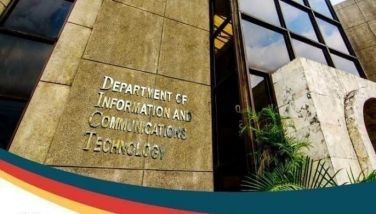Carrying the burden of power rates
May 23, 2002 | 12:00am
Next to the PPA (purchased power adjustments), the IPPs (independent power producers) are the most abhorred elements in the power price hike debate. Blame is easy to lay on the former President Ramos under whose watch most of the IPP contracts were signed. Erap is likewise censured although he swears no IPP contract was signed during his administration. The IPP issue is a classic case of a solution that turned out to be a problem.
The energy crisis of the 90s spawned the IPPs. The only solution to the brownouts that lasted ten hours daily was to build power plants. There were two options–either the Napocor or the private sector builds the plants. As government was cash strapped, as always, Napocor would have to borrow to build the needed plants. Thus, the private sector was the better option. And so the IPP came to be. With the IPPs, the problem of under supply, the cause of the brownouts was solved but ended up with the problem of over-supply.
In the early 90s, when the blocks of capacity to be supplied by the IPPs were being planned, Asia was on the upsurge. With the Philippines riding the crest of the surge, most GDP growth estimates for the year 2000 and beyond exceeded 9.5 percent. Who could have known the 1997 Asian Crisis would occur? We went on slowdown, registering just 3.4 percent growth last year, way below projections when the IPPs were being built. Obviously there was an accompanying slowdown in the demand for electricity.
As of today, by Napocor’s account, we have 12,800 megawatts of power plants serving demand of only 7,800 megawatts for a 40 percent over capacity. It must be pointed out that most countries have safety margin of at least 20 percent overcapacity in power supply. Power experts say that anything less than 20 percent overcapacity would be downright irresponsible.
Thus, our real surplus is only 20 percent which, power experts say, would easily disappear–and with it, a huge chunk of the PPA charge–in less than five years even if our economy only grows 3 percent per annum. Considering that we grew by 3.4 percent last year, and we are in step with growth projections pegged at 4 to 4.5 percent this year, the oversupply problem would be erased in five years.
The oversupply is not actually that bad. What makes it bad is that the consumers are made to pay for the oversupply, which they do not actually use. We are mad. But, like it or not–of course, we do not like it–that is the way it goes. Earlier, we mentioned the standard worldwide practice of maintaining power oversupply of 20 percent. Strictly speaking, that 20 percent is not an oversupply but a reserve. As practiced worldwide, that oversupply is paid for by consumers as part of the electricity providers services. In case of actual oversupply, such as our actual 20 percent oversupply, we still pay for the power even if we do not use it. You may or may not accept it, but there is an explanation.
Internationally, there is a standard feature in power plant contracts called "Take-or-pay" which goes like this: If the power distributor commits to buy two kilowatt hours from a power producer but purchases only one kWh, the distributor would still have to pay for the two kWh, with the cost of unused electricity passed on to consumers. Hold-up or not, "take-or-pay" provision is SOP in the IPP contracts the world over.
This is the rationale: A power plant can only sell its kilowatt hours to the electricity grid it is connected to. If Napocor or Meralco refuse to buy during times of excess supply such as is now prevailing, the IPP cannot pact its electricity and ship it to areas with power shortages. Nor can the plants be easily dismantled, transported, and rebuilt in other parts where they will be useful.
With the staggering cost involved, no investor or lender would commit funding for a power plant without a "take-or-pay" provision. Otherwise, investors and funders could end up with a white elephant.
Was it wrong, then, for the government to have enticed IPPs to invest when Napocor could have borrowed to set up the power plants? In terms of paying the overcapacity, it does not matter if the plants are owned by IPPs or by Napocor. If Napocor had built the plants – assuming it managed to borrow billions of dollars to finance the projects – we would still be in the same fix. We would not be spared the cost of overcapacity since the charge for unused electricity would be included in the Napocor’s rate base.
Transportation and Communications Secretary Pantaleon D. Alvarez recently praised the cooperation of civic organizations in the government drive against smoke belching and colorum vehicles, even as he appealed for more public support for the DOTC’s campaign against traffic violations.
"Road violators of the Clean Air Act, as well as those who prevent the smooth flow of traffic through a disregard of traffic rules and regulations, cause not only traffic delays and confusion, they also pose hazards to health and harm to the national economy," Alvarez said.
He explained that traffic congestions result in more expenses for gas and maintenance and discourages foreign and local investors from investing in the national economy, while exhaust pollution causes serious respiratory problems, including tuberculosis and asthma.
The DOTC secretary also expressed appreciation for the efforts of several non-government organizations that have joined the DOTC campaign against road pollution and traffic malpractices. Among the groups that have joined the anti-colorum and anti-smoke belching campaign are the ABS-CBN Bantay Kalikasan and the Deputized Program Advocates.
The two NGOs have been instrumental, along with the DOTC and its attached agencies, in netting close to a hundred apprehensions of colorum and smoke-belching motor vehicles during the last two months. Alvarez said private individuals could contribute to the campaign by using the DOTC Hotlines in reporting cases of violations to Land Transportation Office (LTO) and the Land Transportation Franchising and Regulatory Board.
Alvarez said that only with public cooperation could the government fully rid the roads of pollution-spreading and illegal vehicles, as well as of reckless and discourteous public utility drivers. He also noted with dismay the hesitation of legitimate bus companies and operators’ associations to provide information on colorum vehicles that have been edging them out in their spheres of operations.
According to the bus companies concerned, the operation of some colorum vehicles was being protected by some elements of the Philippine National Police. When they reported the operation of colorum vehicles, they added, they immediately faced retaliation by the police officers concerned through unreasonable apprehensions for various alleged traffic violations.
Secretary Alvarez, however, assured the bus operators of support in their anti-colorum drive. Alvarez said he would coordinate with the Department of Interior and Local Government to end the protection of colorum operations being exercised by some unscrupulous police officers.
Thoughts For Today:
When the door of happiness closes,
another opens, but often times we look
so long at the closed door that we do not see
the one which has been opened for us.
The best kind of friend is the kind
you can sit on a porch and swing with,
never say a word, and then walk away feeling
like it was the best conversation you have ever had.
My e-mail addresses: jaywalker@pacific.net.ph and artborjal@yahoo.com
When the door of happiness closes,
another opens, but often times we look
so long at the closed door that we do not see
the one which has been opened for us.
you can sit on a porch and swing with,
never say a word, and then walk away feeling
like it was the best conversation you have ever had.
BrandSpace Articles
<
>
- Latest
- Trending
Trending
Latest
Trending

By BABE’S EYE VIEW FROM WASHINGTON D.C. | By Ambassador B. Romualdez | 9 hours ago

By DIPLOMATIC POUCH | By Retno Marsudi | 9 hours ago
Latest
Recommended

March 21, 2025 - 10:09am

























